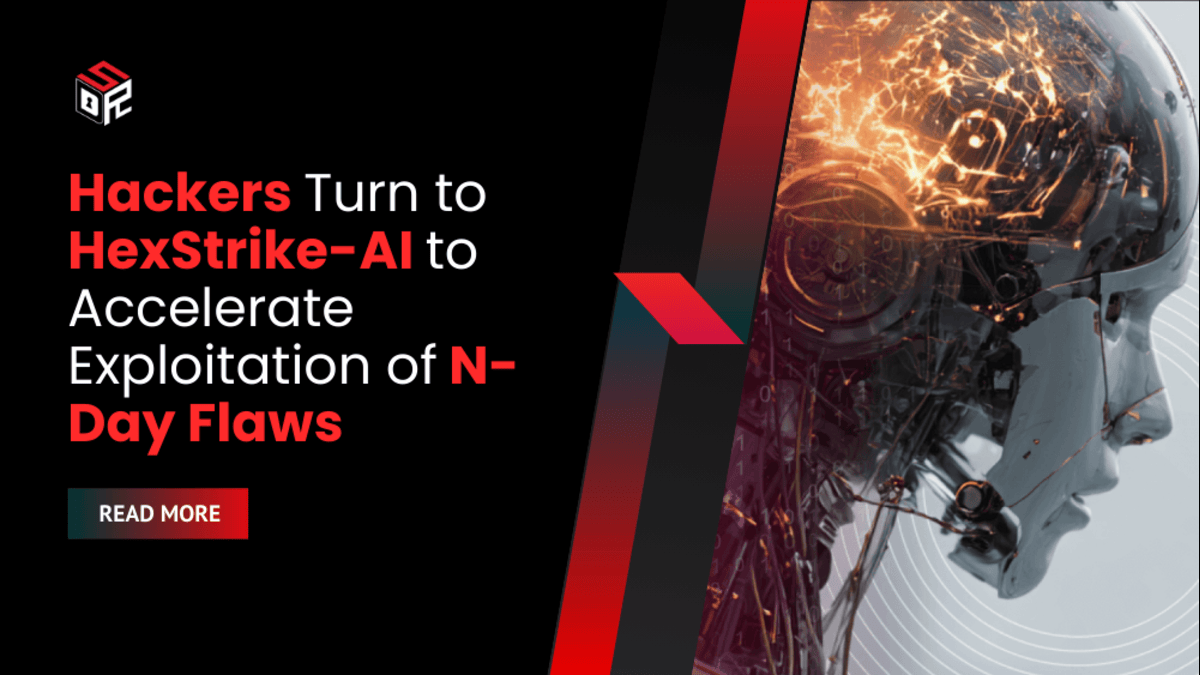A new AI-powered offensive security framework called HexStrike-AI has become a focal point in cybersecurity circles after threat researchers observed attackers adopting it to exploit newly disclosed vulnerabilities. The framework, originally built for legitimate red team operations, is now being weaponized to automate exploitation against enterprise systems at alarming speed.
Rising Concern Over Weaponized AI in Cyberattacks
Check Point Research reported seeing widespread discussion on the dark web around HexStrike-AI, specifically linked to the weaponization of recently disclosed Citrix NetScaler ADC and Gateway vulnerabilities. These include CVE-2025-7775, CVE-2025-7776, and CVE-2025-8424.
Data from ShadowServer Foundation highlights the urgency of the threat. As of September 2, 2025, nearly 8,000 endpoints remained exposed to CVE-2025-7775, although that number had dropped significantly from 28,000 the prior week.
According to Check Point, attackers appear to be leveraging HexStrike-AI to compress the timeline from disclosure to exploitation. In effect, the once small patching window for administrators could soon shrink to near zero.
What HexStrike-AI Was Designed to Do
HexStrike-AI is the work of cybersecurity researcher Muhammad Osama, who developed the framework as an open-source red teaming tool. It allows AI agents to autonomously run over 150 security tools for penetration testing and vulnerability discovery.
The tool’s technical design relies on large language models integrated through the Model Context Protocol (MCP). “HexStrike AI operates with human-in-the-loop interaction through external LLMs via MCP, creating a continuous cycle of prompts, analysis, execution, and feedback,” its creator explains.
It also includes built-in resilience, featuring retry logic and recovery handling to adjust configurations when steps fail, ensuring automated operations continue without interruption.
Released on GitHub just a month ago, HexStrike-AI has already gained momentum, earning more than 1,800 stars and over 400 forks. While it has clear value for professional red teams, it has also attracted hackers eager to exploit its automation.
Hackers Seize on Citrix Vulnerabilities
Check Point Research observed attackers in underground forums discussing ways to adapt HexStrike-AI for the rapid exploitation of Citrix flaws. The discussion focused on CVE-2025-7775, which allows unauthenticated remote code execution.
Threat actors reportedly used the tool to automate the chain: scanning for exposed instances, creating tailored exploits, deploying webshells, and then maintaining persistence on compromised appliances. Some compromised NetScaler systems were even offered for sale on dark web marketplaces shortly after the attacks.
While direct attribution of exploitation to HexStrike-AI has not yet been confirmed, researchers believe the framework’s capabilities make such operations more likely. The tool’s automation could compress the cycle of exploitation from days into minutes, tilting the balance further against defenders.
A Growing Risk for Enterprise Defenders
Check Point warned that this shift marks a dangerous inflection point. “The window between disclosure and mass exploitation shrinks dramatically,” the company said, referencing its analysis of CVE-2025-7775.
“CVE-2025-7775 is already being exploited in the wild, and with HexStrike-AI, the volume of attacks will only increase in the coming days.”
For enterprises, this means patch management, already a difficult race against time, could become nearly impossible if automation becomes the norm in offensive operations.
Calls for Stronger Defenses and Faster Intelligence
While patching remains essential, Check Point emphasized the need for a broader defense posture in light of this new AI-enabled threat landscape.
The company advises organizations to:
- Invest in early warning systems through timely threat intelligence.
- Deploy AI-powered defensive tools to counter AI-powered attacks.
- Strengthen adaptive detection and incident response to catch exploitation attempts early.
The emergence of HexStrike-AI mirrors the wider trend of AI frameworks being co-opted for malicious purposes. Just last month, Ukraine’s CERT revealed “LameHug,” another AI-assisted malware tool leveraging APIs to dynamically generate exploit commands. Together, these cases underline the increasing weaponization of AI within cybercrime ecosystems.
As Check Point noted, the use of HexStrike-AI by attackers is not just an isolated event but a preview of how AI-driven exploitation will challenge enterprise defenders moving forward.









